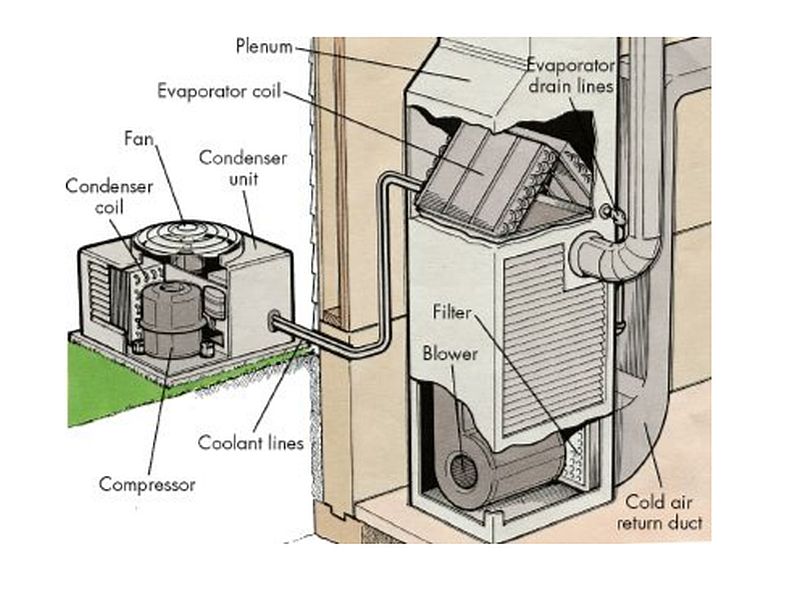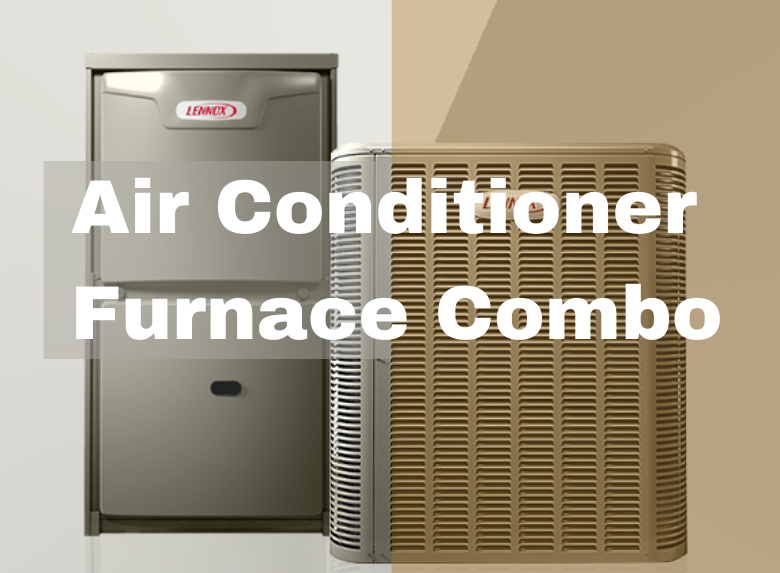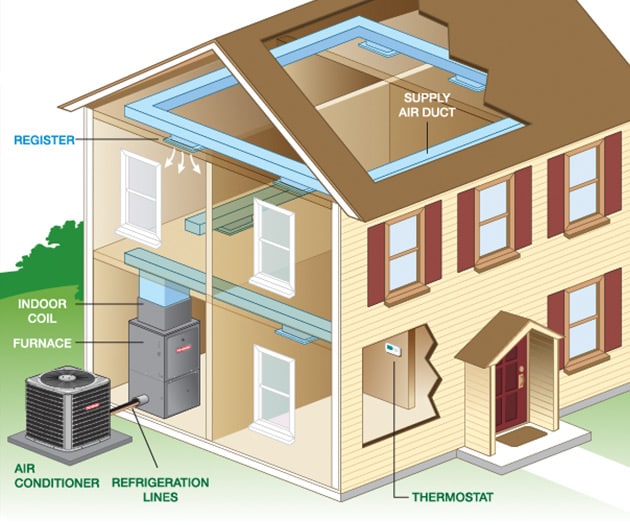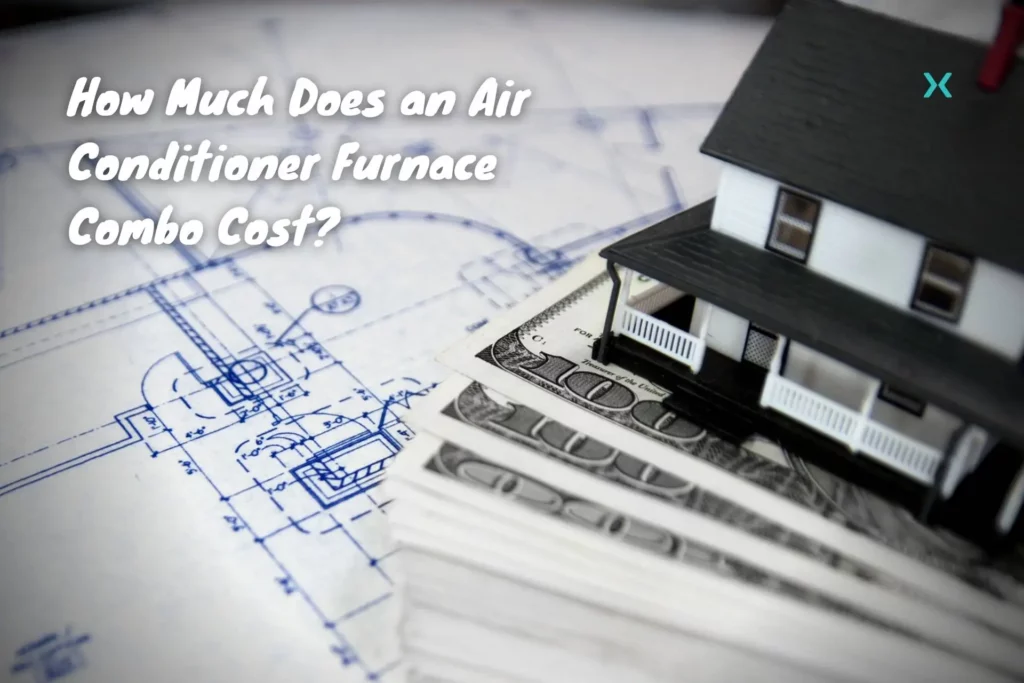Does The Furnace Run The Air Conditioner

One of the most frustrating HVAC problems homeowners face is a system that seems confused. You want cool air, but it feels like your furnace is running alongside the air conditioner, or vice versa. This can lead to uncomfortable temperatures, skyrocketing energy bills, and ultimately, a stressed-out HVAC system. Let's break down how to troubleshoot this issue and figure out if your furnace is mistakenly running when it shouldn't be.
Is My Furnace *Really* Running With the AC? Initial Assessment
Before diving into technical checks, let's establish if the furnace is *actually* the culprit. Sometimes, what feels like the furnace running might be something else entirely. Here's what to do:
1. Observation: Feel the Air
This is the easiest first step. Stand near a supply vent (where the air comes *out*). Does the air feel warm or hot? If it does, that's a strong indicator that the furnace is indeed running, even though your AC is on.
No tools required for this – just your sense of touch!
2. Listen Closely
Head down to where your furnace and air conditioner are located. Listen carefully. Can you hear the furnace blower motor running? Can you hear the burner igniting (a whooshing sound)? If you hear these noises while your AC is supposed to be cooling, it strengthens the likelihood of a furnace issue.
No tools required, but good hearing helps!
3. Check the Thermostat
Double-check your thermostat settings. Is it set to "Cool"? Is the fan set to "Auto" or "On"? If the fan is set to "On," it will continuously circulate air, which *can* make it feel warmer if there's any residual heat in the furnace or ductwork. Setting the fan to "Auto" ensures it only runs when heating or cooling is actively in progress.
No tools required, but read your thermostat manual if you are unsure.
4. Central Air Unit Outside
Go outside and check the AC unit. Make sure the fan is blowing air. Also, check the copper pipe which is the coolant line from the AC unit to the house. It should feel cold. If not, the AC may not be cooling. The hot air may be coming from the furnace, but there is no cold air to mix with it.
No tools required, but a safe environment is important here.
Digging Deeper: Diagnosing the Root Cause
If your initial assessment suggests the furnace is running when it shouldn't be, it's time for some more specific troubleshooting. Here are some common causes and how to check them:
1. Thermostat Wiring Issues
This is a frequent offender. Incorrect or damaged wiring in your thermostat can send the wrong signals to your furnace and AC.
What you can check without tools:
- Visual Inspection: Carefully remove the thermostat cover (usually snaps or screws off). Look for loose wires or wires that have come completely detached. Note the color of each wire and where it's connected on the terminal block. Take a picture before you do anything for reference!
- Corrosion: Check for corrosion on the wire connections. Corrosion can interfere with the signal.
What requires basic equipment (proceed with caution!):
- Multimeter: If you're comfortable using a multimeter, you can test the voltage of the wires. *Always turn off the power to the furnace at the breaker before working with electrical wiring!* Refer to your thermostat's wiring diagram to identify the correct wires to test. If you're not confident using a multimeter, it's best to call a professional.
DIY Actions (if you feel comfortable):
- Reconnect Loose Wires: If you find a loose wire, carefully reconnect it to the correct terminal based on your picture and the thermostat wiring diagram. Make sure the connection is secure.
- Clean Corroded Connections: Gently clean corroded connections with a wire brush or sandpaper.
When to call a pro: If you're not comfortable working with electrical wiring, or if you suspect the thermostat itself is faulty, call an HVAC technician. Messing with wiring without proper knowledge can be dangerous and damage your system.
2. Faulty Thermostat
The thermostat itself could be malfunctioning, sending incorrect signals to your HVAC system.
What you can check without tools:
- Factory Reset: Some thermostats have a reset function. Consult your thermostat's manual for instructions on how to perform a factory reset. This can sometimes clear up software glitches.
- Battery Check: If your thermostat is battery-powered, ensure the batteries are fresh. Low batteries can cause erratic behavior.
When to call a pro: If a factory reset and new batteries don't fix the problem, it's likely the thermostat is faulty and needs to be replaced. An HVAC technician can diagnose this accurately and install a new thermostat.
3. Stuck Relay or Contactor
Relays and contactors are electrical switches that control the flow of power to different components of your HVAC system. A stuck relay or contactor could be keeping the furnace blower motor running even when it's not supposed to.
This is generally NOT a DIY fix! Call a professional HVAC technician.
Relays and contactors are located inside the furnace and air conditioner units. Opening these units and working with electrical components is dangerous and should only be done by qualified professionals.
Why you need a pro: Troubleshooting relays and contactors requires specialized knowledge and equipment. Incorrect diagnosis or repair can lead to electrical shock or further damage to your HVAC system.
4. Control Board Issues
The control board is the "brain" of your furnace, controlling various functions based on signals from the thermostat. A faulty control board can cause all sorts of problems, including the furnace running when it shouldn't.
This is generally NOT a DIY fix! Call a professional HVAC technician.
Control boards are complex electronic components. Diagnosing and repairing them requires specialized knowledge and equipment.
Why you need a pro: Replacing a control board requires knowing the correct part number and ensuring it's compatible with your furnace. Incorrect installation can damage the board or the entire furnace.
5. Ductwork Problems
Although less common, problems with your ductwork *can* contribute to the feeling that the furnace is running with the AC. Leaky or poorly insulated ducts can allow hot air from the attic or crawlspace to enter your home, making it feel warmer than it should.
What you can check without tools:
- Visual Inspection: Inspect your visible ductwork (in the attic, basement, or crawlspace) for any obvious leaks or damage. Look for gaps, tears, or sections that have come apart.
DIY Actions (if you feel comfortable):
- Seal Small Leaks: You can seal small leaks with duct tape (use *foil* duct tape, not cloth duct tape). Make sure the surface is clean and dry before applying the tape.
- Insulate Exposed Ducts: If you find exposed ducts without insulation, you can wrap them with fiberglass insulation.
When to call a pro: If you find extensive ductwork damage or are uncomfortable working in the attic or crawlspace, call an HVAC technician or a ductwork specialist. They can properly seal and insulate your ductwork to improve energy efficiency and comfort.
Safety First! Important Reminders
- Turn Off the Power: Before working on any electrical components, always turn off the power to your furnace and air conditioner at the breaker.
- Don't Guess: If you're unsure about something, don't guess! It's better to call a professional than to risk damaging your system or injuring yourself.
- Read the Manual: Consult your thermostat and furnace manuals for specific instructions and troubleshooting tips.
When to Call a Professional HVAC Technician
While some troubleshooting steps are safe for homeowners, certain issues require the expertise of a qualified HVAC technician. Call a pro if:
- You're uncomfortable working with electrical wiring.
- You suspect a problem with the relays, contactors, or control board.
- You've tried the DIY steps and the problem persists.
- You smell gas or suspect a gas leak. Leave the house immediately and call your gas company!
By following these steps, you can systematically troubleshoot the issue of your furnace running with your air conditioner. Remember to prioritize safety and don't hesitate to call a professional when needed. A well-maintained HVAC system will keep your home comfortable and energy-efficient for years to come.










